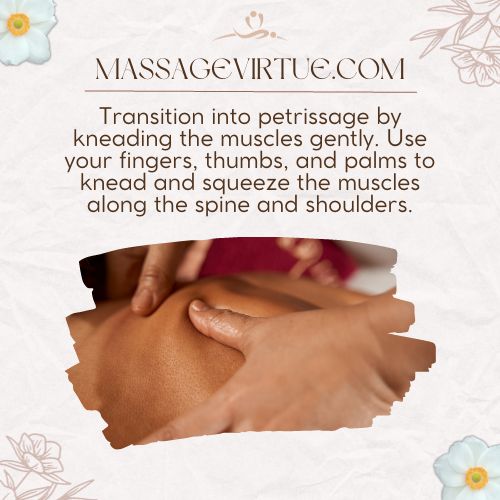If you’re interested in the art of relaxation, pain relief, and stress reduction, then learning how to give a Swedish massage is a valuable skill to acquire.
Swedish massage, renowned for its soothing techniques, can bring immense comfort to individuals seeking relief from muscle tension, stress, or simply a moment of pure relaxation.
Whether you’re an aspiring massage therapist or someone who wants to pamper your loved ones, this comprehensive guide will take you through the ins and outs of Swedish massage, from the basic strokes to its profound benefits.
What is a Swedish Massage?
Before we delve into the techniques, it’s essential to understand what Swedish massage is all about. Swedish massage is a gentle and therapeutic massage style that focuses on relaxation and muscle tension relief. It incorporates five primary techniques:
- Effleurage: Long, sweeping strokes that glide over your body to warm up and relax the muscles.
- Petrissage: Kneading and squeezing motions that help you release tension in the muscles.
- Friction: Circular motions using the fingertips, thumbs, or palms to address knots and adhesions.
- Tapotement: Rhythmic tapping, chopping, or pounding to invigorate the muscles.
- Vibration: Gentle shaking or trembling movements that promote relaxation.
Getting Started: What You’ll Need?
Before you begin your Swedish massage journey, gather these essentials:
- A comfortable and padded massage table or a firm surface with plenty of cushions.
- Clean sheets and towels for hygiene and comfort.
- High-quality massage oil or lotion for smooth strokes.
- Soft lighting and soothing music for ambiance.
- A willing recipient who’s ready to unwind.
Step-by-Step Guide: How to Give a Swedish Massage?
Giving a Swedish massage is not rocket science, rather it is as simple as eating a pizza. Here is step by step guide to give a Swedish massage effectively.
Step 1: Set the Scene
- Create a calming environment by dimming the lights and playing soft, soothing music.
- Ensure the room is comfortably warm, as your recipient will be undressed or partially clothed.
Step 2: Prepare Your Recipient
- Explain the massage process to your recipient, ensuring they’re comfortable and consent to the massage.
- Invite them to lie face down on the massage table, covering themselves with a clean sheet.
Step 3: Begin with Effleurage
- Start with effleurage strokes on the recipient’s back. Use your open palms and fingers to apply gentle, gliding pressure from the neck down to the lower back.
- Repeat these strokes for about 5-10 minutes, gradually applying more pressure as the muscles relax.
Step 4: Petrissage for Muscle Relief
- Transition into petrissage by kneading the muscles gently. Use your fingers, thumbs, and palms to knead and squeeze the muscles along the spine and shoulders.
- Continue this motion for another 5-10 minutes, focusing on areas with tension.

Step 5: Address Knots with Friction
- Apply friction strokes using your fingertips, thumbs, or palms. Work on specific knots or tight spots by applying focused pressure.
- Spend 2-5 minutes on each problem area, gradually reducing the tension.
Step 6: Invigorate with Tapotement
- Introduce tapotement techniques by rhythmically tapping or patting the recipient’s back, alternating between your hands.
- Continue for 2-3 minutes, promoting increased circulation and relaxation.
Step 7: Gentle Vibration
- Finish the massage with gentle vibrations. Place your hands on the recipient’s back and use a subtle shaking or trembling motion.
- This final touch promotes relaxation and helps release any remaining tension.
Step 8: Reassure and Transition
- Let your recipient know the massage is complete and offer assistance as they transition to a seated position.
- Provide a glass of water to help flush out toxins released during the massage.
Post-Massage Tips
| Tips | Description |
| Relaxation Time | After the massage is complete, give your client some time to rest and enjoy the relaxation. |
| Hydration | Provide a glass of water to help the client stay hydrated and aid in flushing out toxins released during the massage. |
| Discuss Any Discomfort | Have a conversation with the client about any potential soreness or discomfort and offer guidance on self-care practices to alleviate it. |
Conclusion
Learning how to give a Swedish massage is a valuable skill that can bring comfort, relaxation, and relief to those you care about.
By following these step-by-step instructions and incorporating effleurage, petrissage, friction, tapotement, and vibration techniques, you can provide a soothing and therapeutic experience.
Remember that practice makes perfect, so don’t hesitate to refine your skills and explore various pressures and techniques.
FAQs
What Are the 7 Swedish Massage Techniques?
In a Swedish massage, there are seven main techniques used:
- Effleurage (gentle gliding strokes)
- Petrissage (kneading and squeezing muscles)
- Friction (applying pressure to release knots)
- Tapotement (gentle tapping or rhythmic patting)
- Vibration (gentle shaking or trembling)
- Stretching (stretching the muscles)
- Joint movement (moving and flexing the joints)
What Gets Massaged During a Swedish Massage?
During a Swedish massage, your therapist typically massages your:
- Back
- Neck
- Shoulders
- Arms
- Legs
- Feet
- Hands
- Sometimes, your abdomen and face (if you’re comfortable with it)
What Do You Wear for a Full Body Swedish Massage?
For a full-body Swedish massage, you usually undress completely or leave on your underwear. You’ll be covered with a sheet or towel, except for the area being massaged.
The therapist will always respect your privacy and only uncover the part they’re working on.
Does Swedish Massage Get Rid of Knots?
Yes, Swedish massage can help with knots or muscle tension.
Techniques like friction and kneading are particularly good at working out these knots by applying pressure and improving blood flow to the area.
What Are the 3 Effects of Swedish Massage?
Swedish massage has several positive effects on your body, including:
- Relaxation: It helps you feel calm and reduces stress.
- Pain Relief: It can alleviate muscle pain and tension.
- Improved Blood Flow: It enhances circulation, which helps in removing toxins and supplying nutrients to your muscles.


